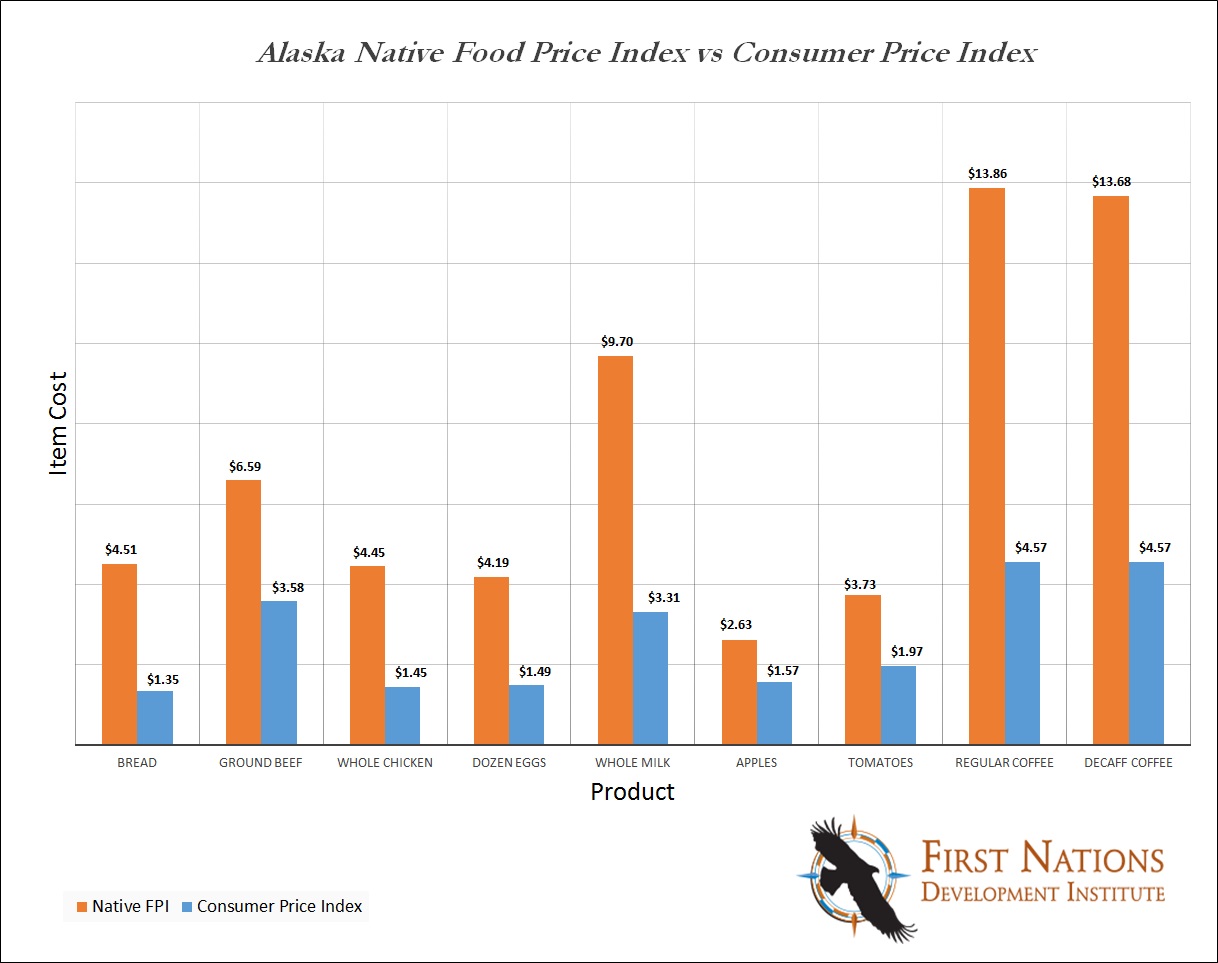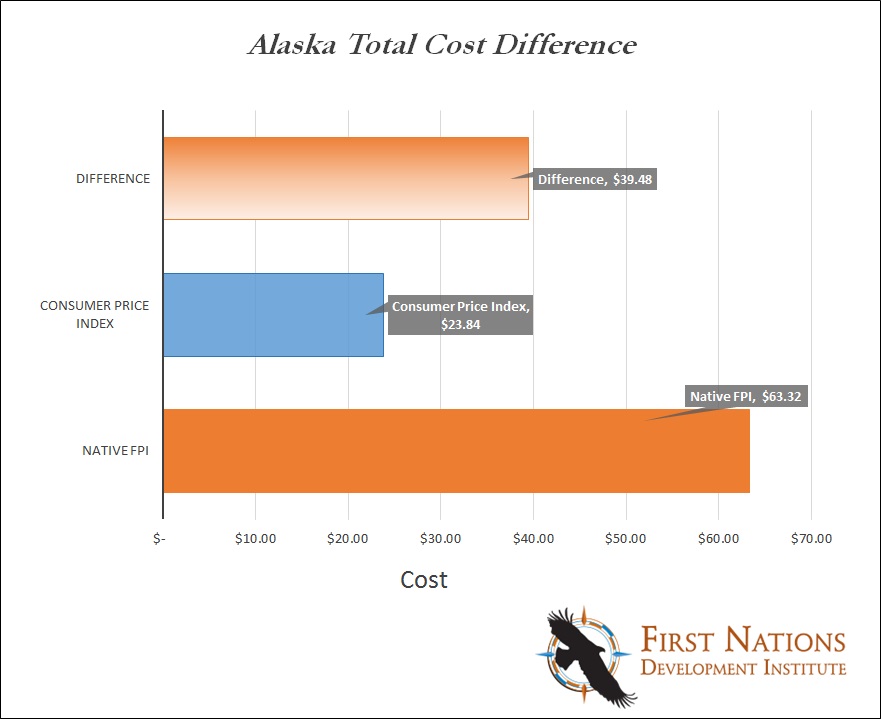New Study Shows Residents in Alaska Native Villages Pay More for Staple Grocery Items
It’s long been assumed that Alaska Native and American Indian communities pay higher costs for food while earning lower-than-average incomes. Now there’s data to back it up.
A food price monitoring report released June 5 with data from the first three months of 2017 illustrates how the combination of these two factors has led to nutritional and financial struggles for many Native American communities.
Forty-eight paid participants helped collect pricing data from 53 stores on reservations and in villages across 12 states, including Alaska. Monthly prices were collected for the following items: a loaf of white bread, a pound of ground beef, a whole chicken, a dozen large eggs, a gallon of whole milk, red delicious apples, a pound of tomatoes, and regular and decaf coffee.
In Alaska Native villages, shoppers paid $39.48 more for the same basket of food items than the average national consumer. The difference is striking, but before thinking the sticker shock only applies because of the distance to Alaska, consider that a shopper on a reservation in the Lower 48 pays $7.51 more than the national average.
The 12-month study is being conducted by the First Nations Development Institute (FNDI), with funding from the W.K. Kellogg Foundation, to continue their work to reduce food insecurity and “food deserts.”
A-dae Romero-Briones, FNDI’s associate director of research and policy for Native agriculture, said in a press release that paying more for less food means consumers choose cheaper, less healthy choices which can ultimately lead to health problems associated with a lack of fresh food.
She said most reservations do not have fresh-food markets and are far from such stores. The higher price of food, plus the cost of gas and limited or nonexistent transportation options prevents these communities from accessing healthy, nutritious foods.
“If there is a convenience store on or near a reservation, it may not carry fresh fruits and vegetables, and just basic food staples come at a higher cost as our initial data results indicate,” Romero-Briones stated in the release.
The second quarter results for 2017 will be released in August and a completed report for the study will likely be released in December.
Learn more about the study and its pilot project at www.firstnations.org








